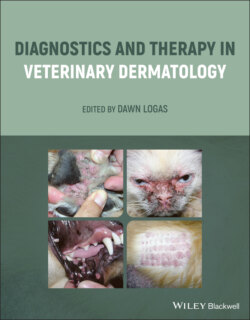Читать книгу Diagnostics and Therapy in Veterinary Dermatology - Группа авторов - Страница 52
Immunofluorescence
ОглавлениеLike IHC staining, IF is an ELISA‐based technique that detects antigen or antibody in tissue samples using antibodies labeled with fluorescent dyes (fluorochromes). IF primarily uses fresh frozen tissue fixed in acetone or methanol; however, suspensions of cells, cell cultures, beads, and microarrays can also be used (Severo et al. 2018). Direct and indirect techniques exist where the fluorochrome is bound directly to the agent‐specific antibody (direct IF) or attached to an anti‐immunoglobulin that recognizes the agent‐specific antibody (indirect IF). For example, direct IF is used to detect desmocollin‐1 antibodies in the skin of dogs with pemphigus foliaceus, whereas indirect IF is used to detect desmocollin‐1 antibodies in the serum of dogs with pemphigus foliaceus (Bizikova et al. 2012; Olivry et al. 2006; Severo et al. 2018). IF testing is not widely used diagnostically in veterinary dermatology compared to its growing popularity in human medicine. Instead, its use remains most popular within the research field due to lack of accessibility, the need for specialized equipment, and the ability to make a reliable diagnosis via other means such as clinical evaluation, infectious disease testing, and dermatopathology. Recent evaluation of direct and indirect IF for supporting the diagnosis of pemphigus foliaceus in the dog showed a 75% agreement of direct IF and a 100% agreement of indirect IF with histopathology (Severo et al. 2018). When IF testing becomes more available and affordable, it may be a useful tool for the diagnosis of pemphigus foliaceus.
